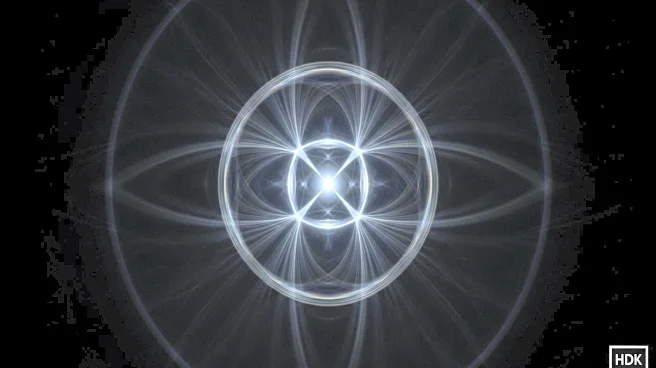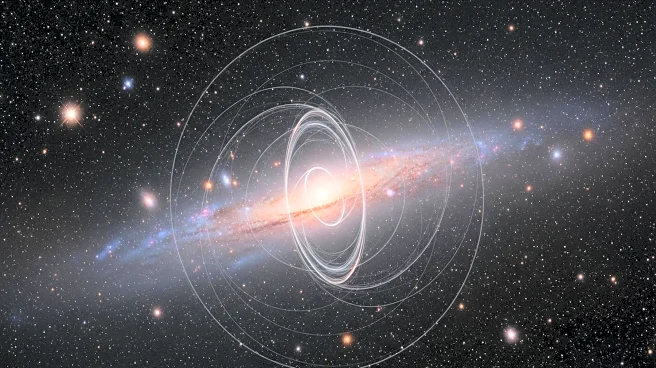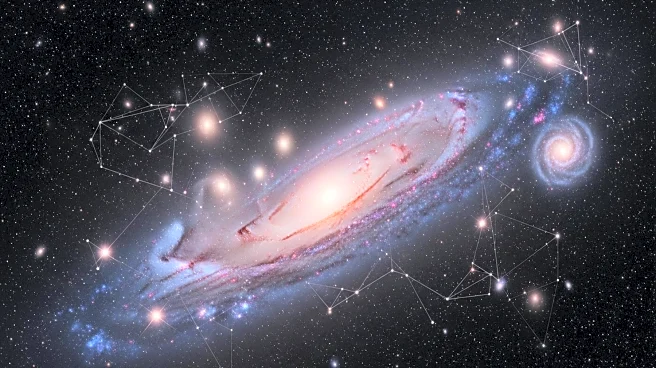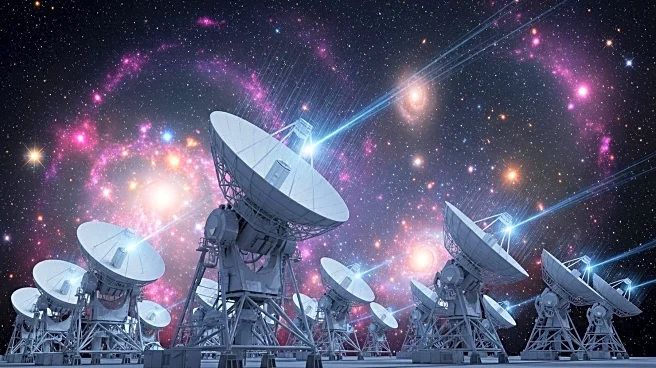What's Happening?
Astronomers have identified a rare cosmic phenomenon known as an Einstein Cross, which has revealed the presence of a massive dark matter halo. The discovery was made by a team led by Pierre Cox from the French National Center for Scientific Research. The Einstein Cross, named HerS-3, features an unusual fifth point of light at its center, which is not typically observed in such formations. This anomaly led researchers to conclude that a significant amount of dark matter is influencing the gravitational lensing effect observed. The light from the central dot, along with the four surrounding dots, originates from the same distance, suggesting the presence of dark matter. The findings were published in The Astrophysical Journal.
Why It's Important?
The discovery of the HerS-3 Einstein Cross provides a unique opportunity to study dark matter, a mysterious component of the universe that interacts only through gravity. Understanding dark matter is crucial for comprehending the universe's structure and evolution. The presence of a dark matter halo in this configuration allows scientists to explore the characteristics of both the distant star-forming galaxy and the galaxy group causing the lensing effect. This research could lead to new insights into the distribution and behavior of dark matter, which remains one of the most significant unknowns in astrophysics.
What's Next?
The HerS-3 system offers an astrophysical laboratory to further investigate the properties of dark matter and the galaxy group lensing the distant star-forming galaxy. Future observations and modeling could provide more detailed information about the dark matter halo's characteristics and its impact on the surrounding cosmic structures. Continued research in this area may enhance our understanding of dark matter's role in the universe and its potential implications for galaxy formation and evolution.










